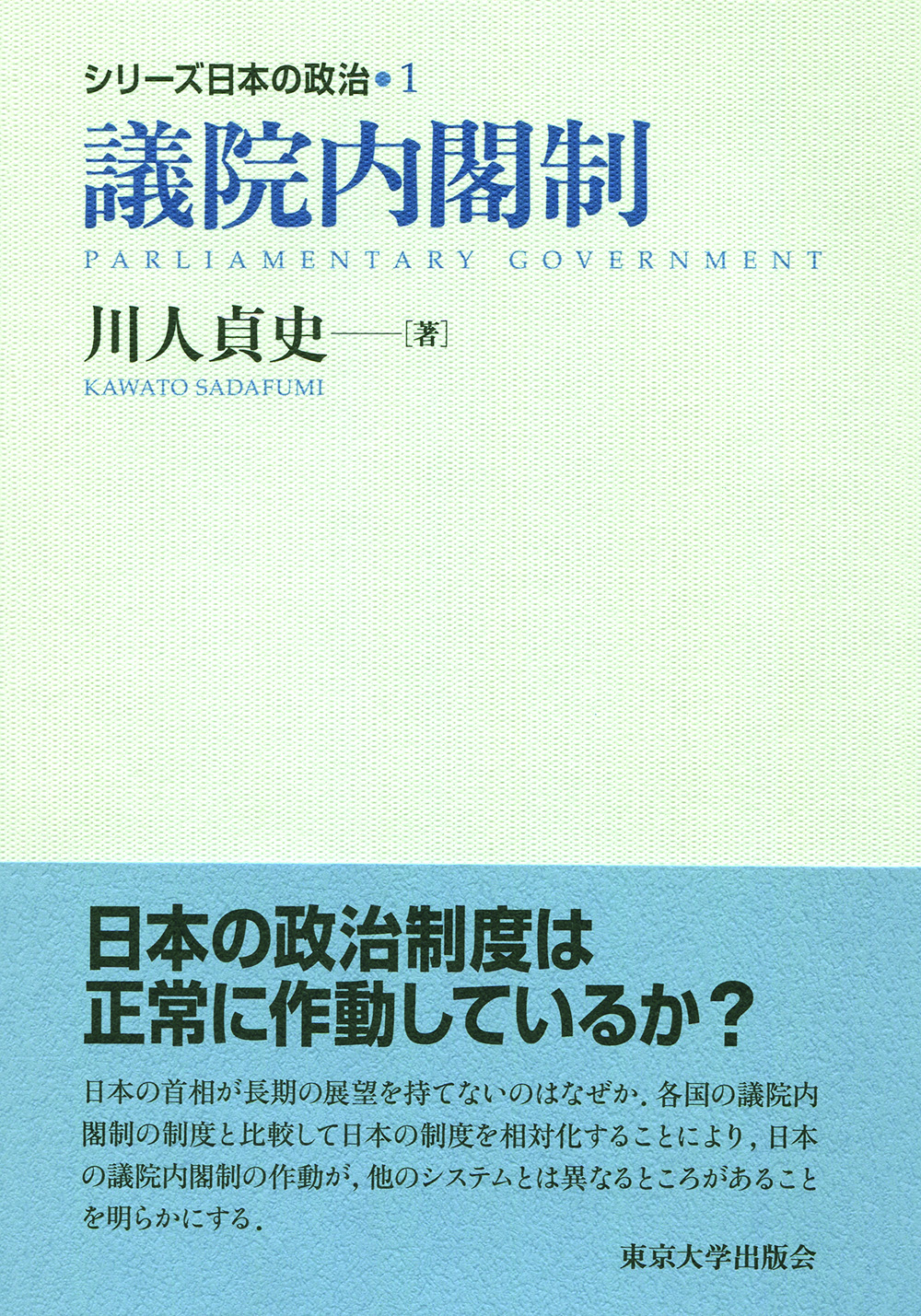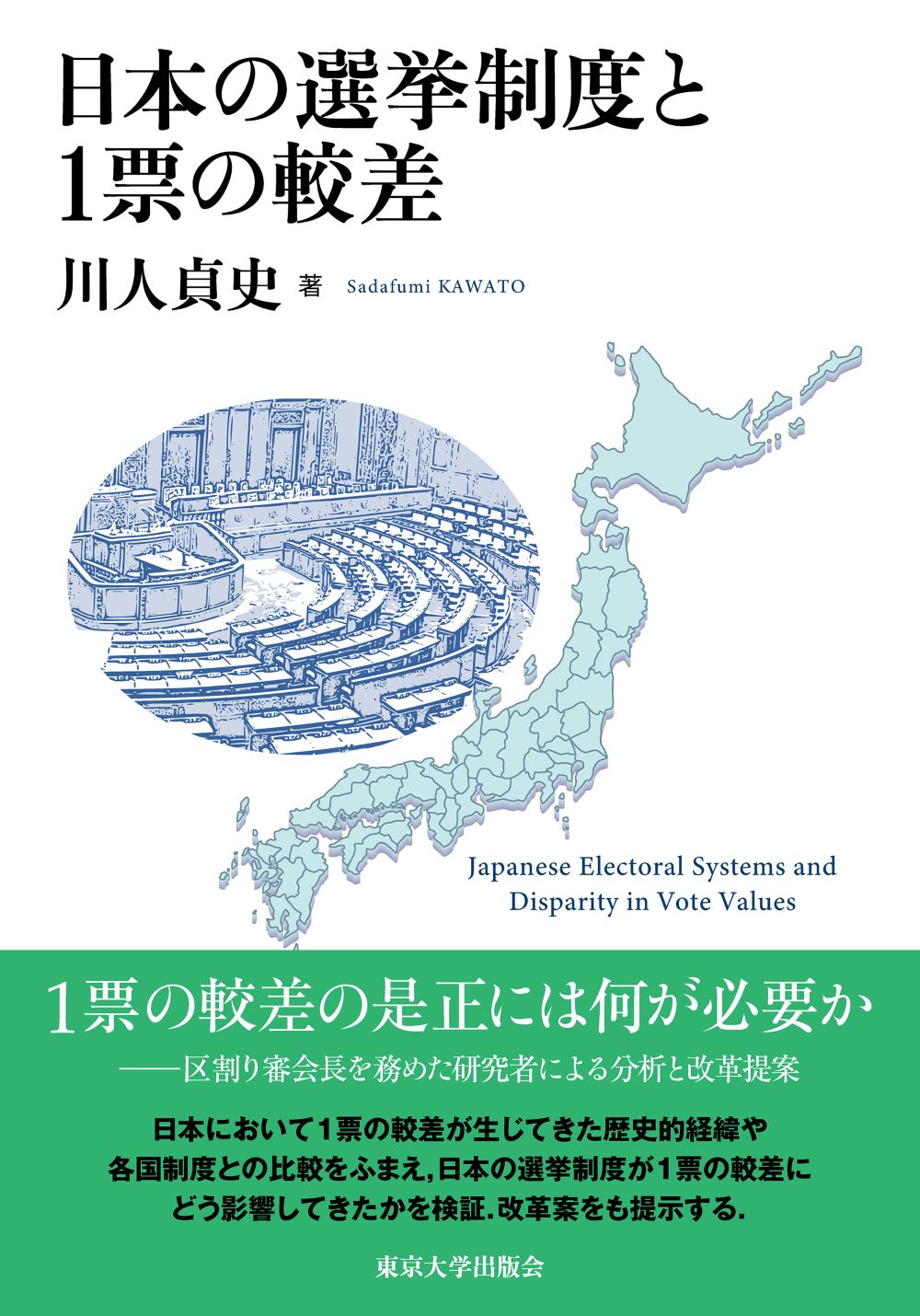
Title
Contemporary Japanese Politics Series Vol.1 Giin Naikakusei (Parliamentary Government)
Size
240 pages, 127x188mm
Language
Japanese
Released
April 24, 2015
ISBN
978-4-130-32121-1
Published by
University of Tokyo Press
Book Info
See Book Availability at Library
Japanese Page
Adopting a comparative political science approach, this book shows that the political institutions of Parliamentary Government in contemporary Japan are distinct in many aspects from those in other countries, and thus they bring about different political outcomes from other systems. For example, while Prime Ministers in the United Kingdom and Germany expect to remain in office throughout the parliament’s entire term of office following general elections, Japanese Prime Ministers do not and cannot do so. Moreover, they often resign in the midst of the term of office of the members of the House of Representatives without calling general elections.
Reports by mass media often give detailed descriptions of what actual political developments led to a particular Prime Minister’s resignation without questioning them. Political commentaries offer their own versions of explanation of the political phenomena. Such sources tend to claim that each of successive Japanese Prime Ministers failed to handle specific problems they faced under certain political situations and had to step down. This work criticizes this perspective as not helpful for a proper understanding of Japan’s political process. It also asserts that the results of research based on the theoretical and empirical analysis of contemporary political science do provide more systematic accounts and thus can contribute to actual improvements in politics.
There are several reasons why Japanese Prime Ministers cannot have long-term prospects of their administrations. First, because the Prime Minister can call a general election at will, he will use his power to do so before the term of four years expires. Second, the Prime Minister is also a leader of the majority party (coalition) in the Diet. The term of office of leaders of major parties such as the Liberal Democratic Party and the Democratic Party is three years, and if the Prime Minister loses in a party leadership election, he also resigns as Prime Minister. In case the Prime Minister resigns for some reason, he also steps down as party leader. A successor’s term of office for party leader is the remaining period of the predecessor’s term. This rule causes frequent party leadership elections. Third, the Prime Minister is also responsible for the electoral performance of the governing party in the House of Councillors election held every three years. Fourth, politicians, the mainstream media, and political pundits always expect changes in the political situation over relatively short periods. They tend to argue that it is the Prime Minister’s responsibility to keep high Cabinet approval ratings in the monthly survey, pass major legislation in the Diet, win in local elections, keep economic situation viable, and do other things along these lines; they criticize him if things change for the worse. Thus, it is common knowledge in Japanese politics that the period in which the Prime Minister and the Cabinet stays in office is usually shorter than the term of office of the members of the House of Representatives.
This book provides a comparative political analysis of the various aspects of Japan’s Parliamentary Government by focusing on the interactions between the political institutions and political actors within them. The Constitution of Japan stipulates confidence relationship between the Diet and the Cabinet, the latter’s power of dissolving the House of Representatives and calling a general election, and the bicameral legislature with virtually equal legislative power between both Houses. These constitutional rules bring about the political process of governing parties and opposition parties in the Diet. The Cabinet also establishes the delegation and accountability relationship with the administrative bureaucracy. Within the context of the institutional constraints that restrict the alternatives of the political actors, these actors pursue utility maximization, and their interactions produce political outcomes that are particular to Japan. Thus, this book elucidates the characteristics and functioning of Japan’s Parliamentary Government that have not yet been clarified.
(Written by KAWATO Sadafumi, Professor, Graduate Schools for Law and Politics / 2017)
Related Info
Reviewed by Gregory W. NOBLE, “Toward a Responsive Two-Party System? A Review of ‘Series: Japanese Politics’ Gi’in Naikakusei (Parliamentary Government) (Social Science Japan Journal Vol. 19, No. 1, pp 85–97 2016)
https://academic.oup.com/ssjj/article/19/1/85/2451776



 Find a book
Find a book


 eBook
eBook
